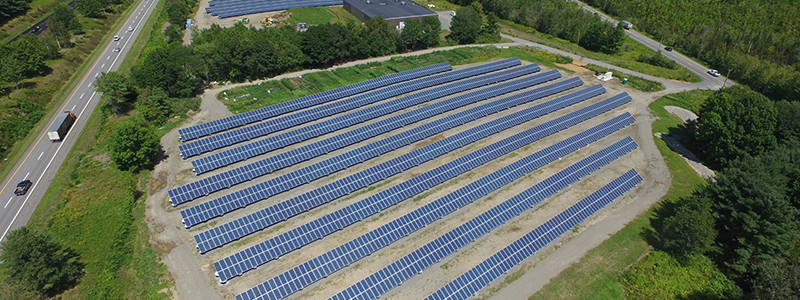
Content updated on April 28, 2023
Electrons are the new crop sprouting up across North America. Just like traditional community gardens, which increase urban dwellers’ access to larger plots of land to grow food, community solar farms allow individuals to access solar power without installing equipment on their property or any upfront costs. The electricity generated by a community solar farm is sent to the electric grid and helps power nearby homes and businesses. Community solar farms make it easier for anyone to participate in the transition to renewable energy, even if your rooftop is ineligible for housing a solar array (for instance, you might rent property or live in a building without adequate sun exposure).
Here we will walk you through the benefits of community solar farms, how you can participate in one, and how your community can construct its own community solar farm.
Today, many American households and businesses do not have access to solar because they rent, live in multi-tenant buildings, have roofs that are unable to host a solar system, or experience some other mitigating factor. By utilizing one central space with ideal conditions for solar, businesses and individuals can participate in a solar program and gain access to clean energy.
Community solar farms are not just for those who are ineligible for solar. These projects are open to nearly everyone who pays an electric bill, including individual residents or business owners that wish to avoid onsite installation and upfront costs. As this market continues to evolve, joining a community solar farm is becoming easier and easier.
Community solar farms exist in states that have instituted shared renewables legislation, including the District of Columbia and the following 22 states: California, Colorado, Connecticut, Delaware, Hawaii, Illinois, Massachusetts, Maryland, Maine, Minnesota, North Carolina, New Hampshire, New Jersey, New Mexico, Nevada, New York, Oregon, Rhode Island, South Carolina, Virginia, Vermont, and Washington. Community solar farms also appear in some pockets of the country where smaller utilities and co-ops have launched independent shared renewables programs.
Whereas traditional rooftop solar is connected to your home’s main utility service panel, community solar gardens are connected directly to your local electric grid. The electricity generated by the solar panels is distributed in the energy mix and powers the surrounding homes and businesses. A meter measures how much clean energy is being sent to the electrical grid. Your local utility provider monitors that meter and ensures that all participants (or “subscribers”) in the community solar farm are credited on their energy bill for their contribution to the solar project.
Example: if you are subscribed to 8 kilowatts (or approximately 25 modules), your monthly utility bill would reflect that you’re producing 8 kilowatts of clean energy.
To participate in a community solar farm, you simply need to subscribe to a nearby project — similar to renting an apartment or signing up for a streaming service.
A household or business subscribes to a portion of the project, roughly matching their annual energy consumption. There are no upfront fees. Instead, you agree to pay for the electricity generated by your portion of the solar array, which is generally less than the credit that you are receiving on your monthly utility bill.
Example: let’s say you are subscribed to a project and are credited $100 on your monthly utility bill. Then, you would receive a second invoice from the solar farm operator for $90—a net savings of 10%.
Different regions of the country use different terminology when discussing solar energy projects. Solar gardens are most commonly and easily associated with community solar, distributed solar, or shared solar projects in markets east of the Mississippi. The term solar farm can be used to describe any offsite solar project. Almost all shared solar projects have the same financial structure, regardless of whether they are called gardens or farms.
While it is possible to construct your own community solar farm, it is an incredibly difficult undertaking that almost always requires a professional development company. Here are a few reasons:
As you can see, developing a new solar farm requires a significant amount of time and capital, and should generally be left to the professionals. However, you can take action to encourage the development of a community solar farm in your local area:
Pivot Energy
Together, solar and storage offer the unique ability to lower both demand and energy portions of a customer’s electricity bill.